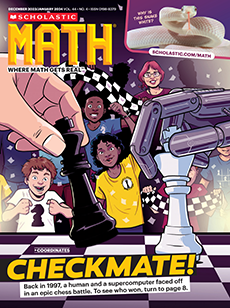Display the following recipe: allrecipes.com/recipe/11937/baked-macaroni-and-cheese-i. Point out to students that the recipe makes 5 servings. Have students think-pair-share to answer the following questions:
• If you wanted to serve more than 5 people, how would the ingredients change? (You would need to increase the amount of each ingredient in the recipe, or scale up.)
• If you needed to serve 10 people, what would you do? Explain. (Multiply each ingredient in the recipe by 2; you need to double the recipe, or scale it up by 2.)
• So, how many cups of cheddar cheese would you need? How do you know? (6; because 3 × 2 = 6)
• How many cups of milk would you need? How do you know? (4; because 2 × 2 = 4)
